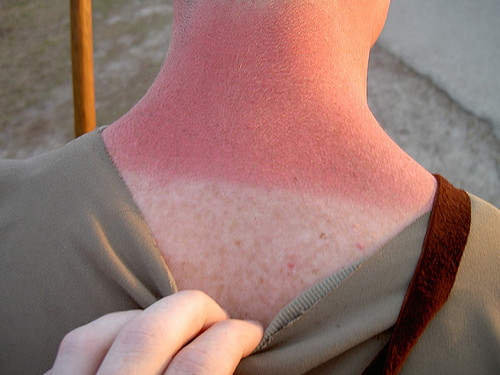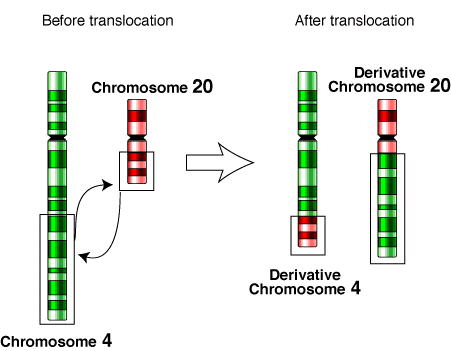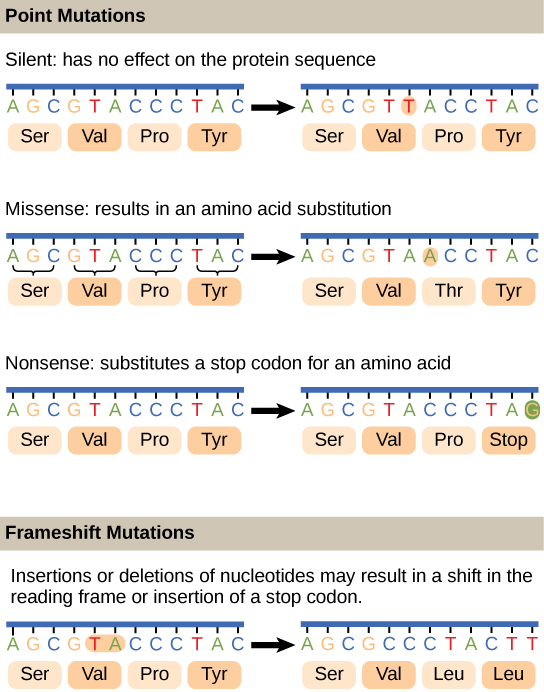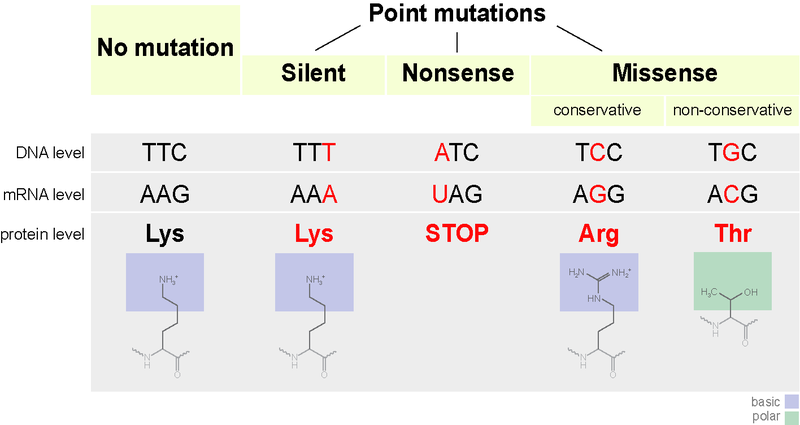Contents
Mutations and Cancer
Mutations
A gene mutation is the alteration of a base in the sequence of bases for one gene. This is likely to occur during DNA replication, which happens during interphase in the cell cycle. Gene mutations occur spontaneously, but the frequency of their occurrence can be increased by certain factors called mutagenic agents.
Because mutations alter the gene, they can result in a different amino acid sequence in the encoded polypeptide. If the amino acid sequence changes, then when the protein is modified into the tertiary structure, it will form hydrogen and ionic bonds in different places and fold differently. This will result in a different 3D shape, and therefore a non-functioning protein.
High Energy and Ionizing Radiation
These mutagenic agents include radiation such as α and β particles, x-rays, and gamma rays. Ultraviolet light is not ionizing, but it is still high enough to cause damage and disrupt the structure of DNA.
Carcinogens
This is the term given to chemicals that can alter the structure of DNA and interfere with transcription. These include chemicals in tobacco smoke, mustard gas, and peroxides.
There are 5 different types of gene mutations:
- Addition
- Deletion
- Substitution
- Inversion
- Duplication
- Translocation
Additions
One extra base is added to the sequence.
Original: TAC TTC AGG TGG
Mutation: TAC ATT CAG GTG G
The impact of adding one base is that all subsequent codons are altered. This is known as a frame shift. This type of mutation can be very harmful because all the altered codons could potentially code for different amino acids and result in a very different sequence of amino acids resulting in a non-functioning protein.
Deletion
A base is deleted from the sequence.
Original: TAC TTC AGG TGG
Mutation: TAC TCA GGT GG
This causes a frame shift to the left. This could result in a different polypeptide chain and a non-functioning protein.
Substitution
One base is changed for a different base, but the number of bases remains the same and there is no frame shift. This results in only one codon changing, and due to the genetic code being degenerate, it may still code for the same amino acid and therefore have no impact.
Original: TAC TTC AGG TGG
Mutation: TAC ATC AGG TGG
Inversion
A section of bases detaches from the DNA sequence, but when they re-join, they are inverted, so this section of code is back to front. This results in different amino acids being coded for in this region.
Original: TAC TTC AGG TGG
Mutation: TAC GGA CTT TGG
Duplication
One particular base is duplicated at least once in the sequence. This causes a frame shift to the right, and a different sequence of amino acids is coded for.
Original: TAC TTC AGG TGG
Mutation: TAC TTT TCA GGT GG
Translocation
A section of bases on one chromosome detaches and attaches onto a different chromosome. This is a substantial alteration and can cause significant impacts on gene expression and therefore the resulting phenotype.
Alterations to the genes can result in a mutation that causes cancer.
Cancer
Cancer is a result of mutations in genes that regulate mitosis. If these genes mutate and non-functioning proteins are made, then mitosis is not regulated, and it results in the uncontrollable division of cells and the creation of a tumor. Not all tumors are cancerous; they can be classified as either benign or malignant.
Benign Tumors
These can grow very large but at a slow rate. These are non-cancerous because they produce adhesion molecules sticking them together and to a particular tissue. They are often surrounded by a capsule, so they remain compact and therefore can be removed by surgery, and they rarely return. For these reasons, the impact is localized and often not life-threatening, depending on the tumor location.





